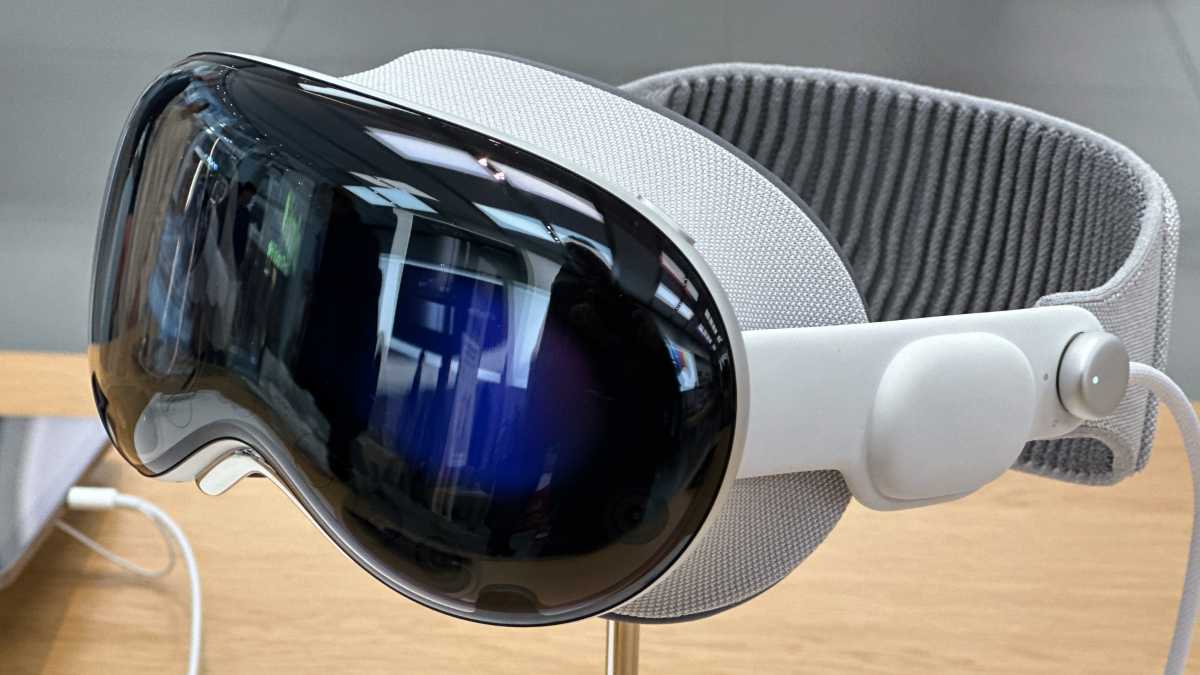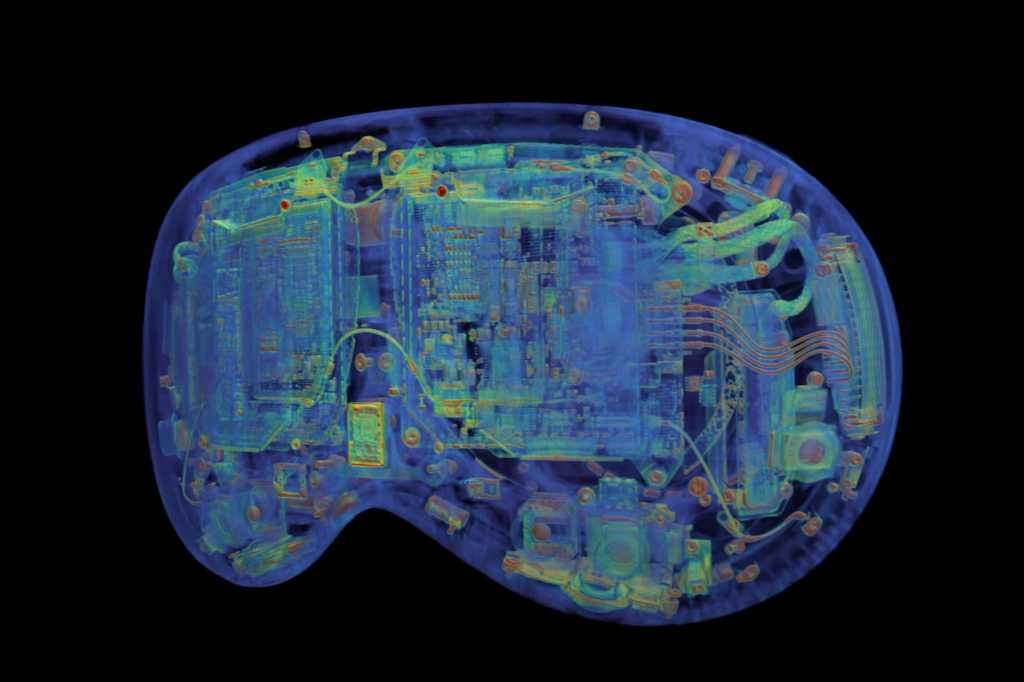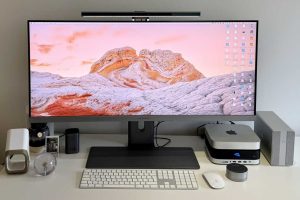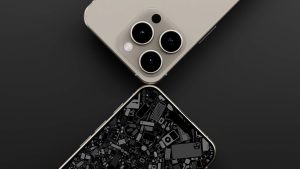
Though Apple Intelligence may have taken the spotlight at this month’s Worldwide Developers Conference keynote, Apple’s big announcement of last year has not been completely forgotten. At WWDC24, the company also debuted visionOS 2 with some important features lacking from the first release, as well as announcing the spatial computer’s imminent availability in several international markets.
But both of those may have been temporarily overshadowed by a recent report that the company is currently focusing its efforts on a less expensive version of the product–note that I didn’t say “cheap”, as the rumored price tag is still in the $1,500 range, making it more economical only by comparison to the $3,499 Vision Pro.
Prioritizing such a device over the Vision Pro 2 makes a lot of sense: the Vision Pro, by all accounts, was cutting-edge technology that was as good a product as Apple could make. As it is, it should continue to be very capable for several years–I’m sure few of the early adopters would be happy to see their very expensive spatial computer superseded in short order. But such a strategy also raises questions about the future of the Vision line and what exactly Apple is planning for it.
The bare essentials
A lower price tag is one thing, but the big question is how Apple intends to slash costs on what is a very complicated and very advanced product. The natural inclination when Apple is making a less expensive version of a product is to, of course, cut features: we see this across the board with its lower-end offerings like the 10th-generation iPad, iPhone SE, Apple Watch SE, and MacBook Air.

The next step for Vision Pro: conquering the challenge of a more affordable headset that doesn’t severely compromise the experience.

The next step for Vision Pro: conquering the challenge of a more affordable headset that doesn’t severely compromise the experience.
Foundry

The next step for Vision Pro: conquering the challenge of a more affordable headset that doesn’t severely compromise the experience.
Foundry
Foundry
The trick, however, is not to cut so many corners that it compromises the fundamental nature of the product. For example, the tenth-generation iPad and iPhone SE might lack Face ID, but with Touch ID built-in, it still checks the box of biometric authentication. The MacBook Air has more limitations on the number of external displays it can drive (a somewhat contentious issue) but at least still supports them. The Apple Watch SE lacks the ECG feature but still does heart rate monitoring. In fact, this whole approach is best summed up by the marketing tagline the company uses for the Apple Watch SE: “All the essentials. Light on price.”
When it comes to the Vision Pro–a product that has only been on the market for four months–it’s hard to tell what users (or Apple) consider essential to the product. If this is all about distilling the product to its core features, what gets cut or how do things get adjusted? The external EyeSight display, for example, seems like a prime target: it’s expensive, it’s heavy, and its primary function–telling others whether or not you can see them–is limited. Is there another way the same function could be accomplished with a simpler, more cost-effective method? Because sometimes the first ideas aren’t always the right ones.
Driving forward
Even as Apple thinks about cutting features from the Vision Pro, it’s still worth thinking about a contradictory challenge: even if the next spatial computer isn’t a Vision Pro, it’s just the second device in the product category, and it still needs to push the state of the art forward.
That might be something as simple as an updated processor. After all, the Vision Pro sports an M2, and Apple is already in the process of starting to move all its products to the M4. By the time a cheaper spatial computer is ready, we’ll likely be seeing at least some products with M5 processors, assuming Apple sticks to its current development pace. It’s not impossible that we’d also see a revised version of its R1 chip for processing input.

By the time Apple releases a new headset (Pro or not), Apple could be moving beyond the M2 chip.

By the time Apple releases a new headset (Pro or not), Apple could be moving beyond the M2 chip.
Apple

By the time Apple releases a new headset (Pro or not), Apple could be moving beyond the M2 chip.
Apple
Apple
Likewise, displays will continue to get better and cheaper, battery life will hopefully improve, and the company may even be able to replace or reduce some of its sensors. All of these enhancements will eventually get bundled into a more expensive Vision Pro successor obviously, but if they can both help cut the cost of the product and continue to move the ball downfield, Apple’s in an ideal situation.
Leading by losses
Even with cheaper technology and less of it, Apple still may struggle to hit the price point it wants to. After all, the company holds itself to a high standard and doesn’t want a cheaper product to feel cheap. This is where my most anathematic idea to bring down the cost of Apple’s next spatial computer comes in: Apple should reduce its margins.
The company is famous for maintaining its comfortable margins across the board, and it’s part of what’s helped propel it to its current financial heights. But those same financial heights are what allow it to make an exception when it needs to, and if it wants to drive adoption of its Vision platform, I’d argue that it needs to. Even a $1,500-ish headset is not going to pick up a slew of new users in an unproven category, so if the company is will to sell the product at break even–or perhaps even a little bit lower–as it attempts to bring costs into line, then it should. After all, what use is the massive amount of profit being generated by all those other Apple products if you can’t use it to fund your riskier ventures?
This isn’t even the first time that Apple’s needed to be aggressive on pricing. The earliest iPhones were sold in part subsidized by the carriers, and even then they saw an unprecedented price cut within the first few months. After the first outrageously expensive fancy Apple Watch Editions, the company revised its pricing strategy to bring the wearable to more users. Sometimes you need to choose between making the most amount of money you can, and actually getting your products into people’s hands.




